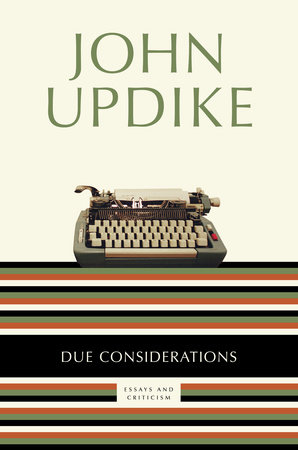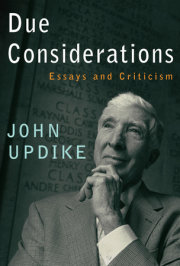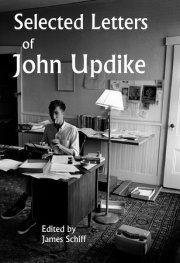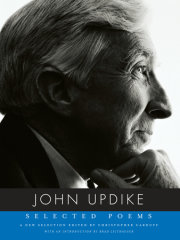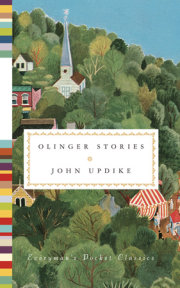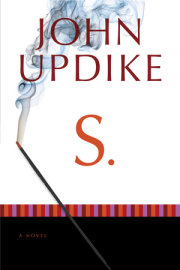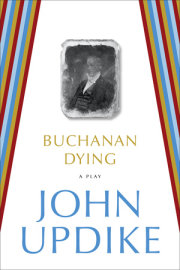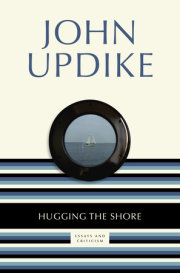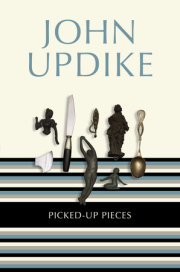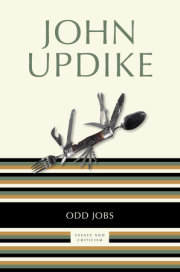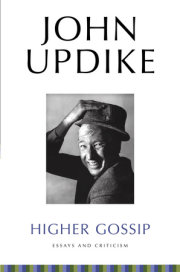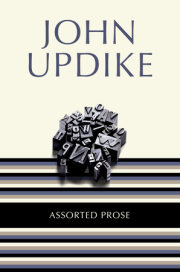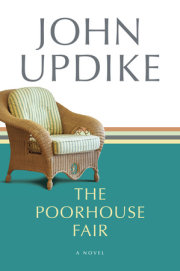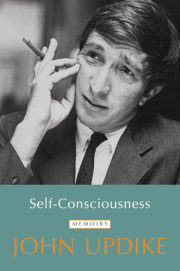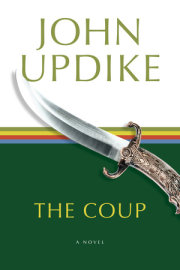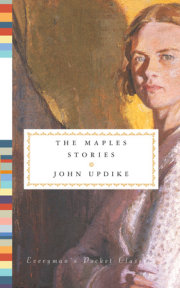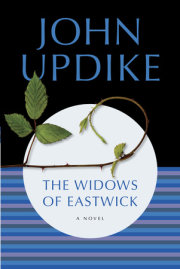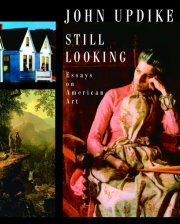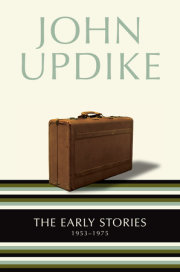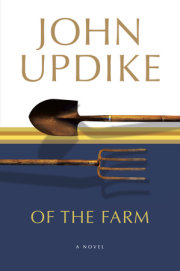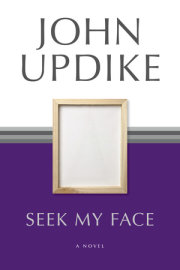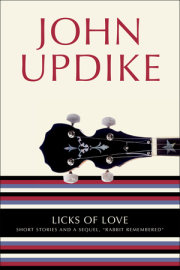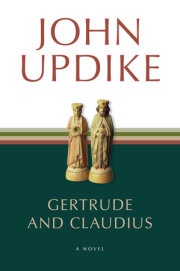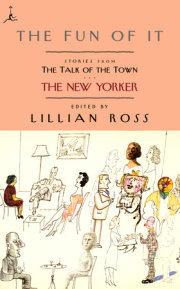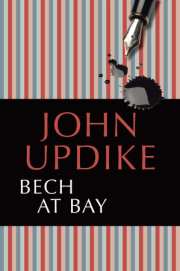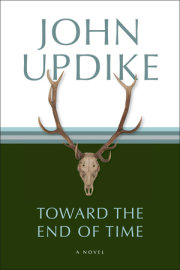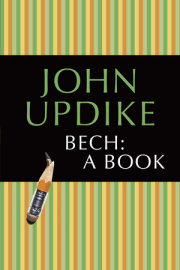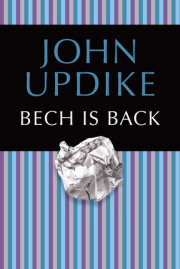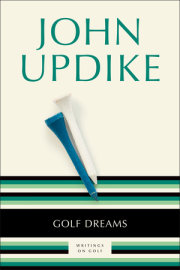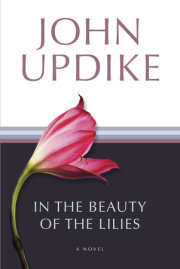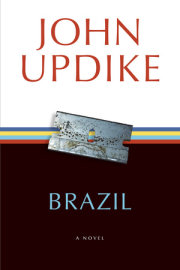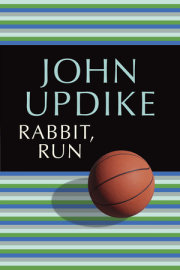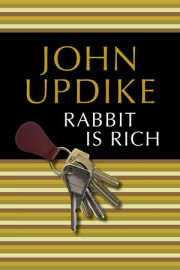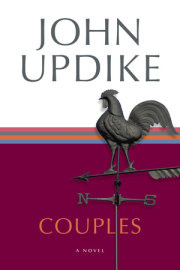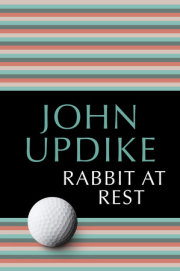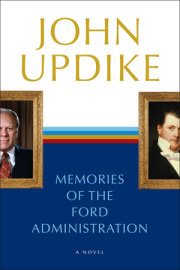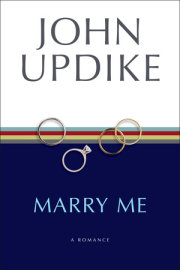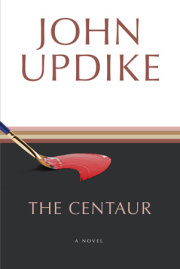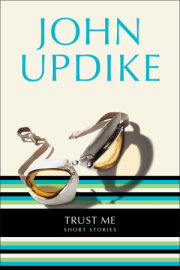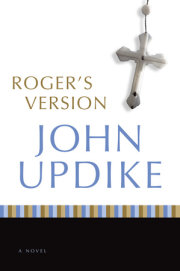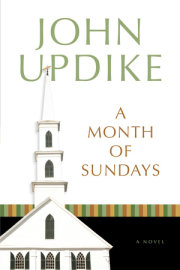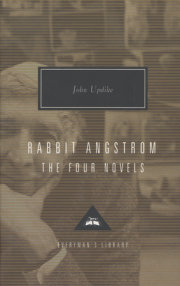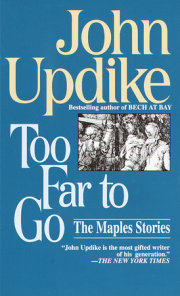"[Updike is] one of the best essayists and critics this country has produced in the last century."—The Los Angeles Times
Here Updike considers many books, some in introductions—to such classics as Walden, The Portrait of a Lady, and The Mabinogion—and many more in reviews, usually for The New Yorker. Ralph Waldo Emerson and the five Biblical books of Moses come in for appraisal, along with Uncle Tom’s Cabin and The Wizard of Oz.
Contemporary American and English writers—Colson Whitehead, E. L. Doctorow, Don DeLillo, Norman Rush, William Trevor, A. S. Byatt, Muriel Spark, Ian McEwan—receive attentive and appreciative reviews, as do Rohinton Mistry, Salman Rushdie, Peter Carey, Margaret Atwood, Gabriel García Márquez, Haruki Murakami, Günter Grass, and Orhan Pamuk.
In factual waters, Mr. Updike ponders the sinking of the Lusitania and the “unsinkable career” of Coco Chanel, the adventures of Lord Byron and Iris Murdoch, the sexual revolution and the advent of female Biblical scholars, and biographies of Robert Frost, Sinclair Lewis, Marcel Proust, and Søren Kierkegaard.
Reading Due Considerations is like taking a cruise that calls at many ports with a witty, sensitive, and articulate guide aboard—a voyage not to be missed.
"The prose is clean, elegant, exquisitely calibrated.... [Updike is] one of the best essayists and critics this country has produced in the last century."—The Los Angeles Times
“If the printed word disappeared, a future race could reconstruct a significant body of nineteenth- and twentieth-century literature from Updike’s work alone. . . . He writes to converse with us on a high plane but in simple language, often stately and sometimes dazzling.”—Chicago Sun-Times
“Updike knows more about literature than almost anyone. . . . He’s beyond knowledgeable—he makes Google look wanting.”—Baltimore Sun
Everything Considered
ON LITERARY BIOGRAPHY
FIVE ESSAYS
Back from China
A Sense of Change
The Future of Faith
Invisible Cathedral
Late Works
GENERAL CONSIDERATIONS
A Case for Books
Looking Back to Now
The Tried and the Treowe
A Layman’s Scope
Against Angelolatry
Ten Epochal Moments in the American Libido
Five Great Novels About Loving
Hydrophobia
My Life in Poker
My Life in Cars
TRIBUTES AND SHORT TAKES
West 155th Street
The Academy As It Was and Is: A Talk, with Slides
The New Yorker
William Shawn
William Maxwell
Wright Morris
Eudora Welty
Ernest Hemingway
Ted Williams
November 22, 1963
JFK, Jr.
September 11, 2001
Considering Books
INTRODUCTIONS
To the Everyman’s Library edition of The Mabinogion
To The Blithedale Romance, by Nathaniel Hawthorne
To Walden, by Henry David Thoreau: 150th Anniversary Edition
To The Portrait of a Lady, by Henry James
To The Diary of Adam and Eve and Other Adamic Stories, by Mark Twain
To Seven Men, by Max Beerbohm
To The Rich Boy, three stories by F. Scott Fitzgerald
To The Eighth Day, by Thornton Wilder
To The Golden West: Hollywood Stories, by Daniel Fuchs
To Karl Shapiro: Selected Poems
To Elephant House, or, The Home of Edward Gorey, photographs and text by Kevin McDermott
To Christmas at The New Yorker: Stories, Poems, Humor, and Art
To the German catalogue of an exhibit of photographs by Ulrich Mack of the Ipswich marshes
MONUMENTS
The Great I Am
Big Dead White Male
Down the River
Oz Is Us
Hide and Seek
THURBER AND WHITE
Introduction to the Perennial Edition of Is Sex Necessary?
Thurber’s Art
Magnum Opus
Introduction to a New Edition of The Letters of E. B. White
AMERICAN FICTION
These Trashy Years
Coming Home
Tote that Ephemera
Dog’s Tears
One-Way Street
Red Loves Rex, Alas
Angel-Tits and Hellmouth
Mind/Body Problems—I
Mixed Messages
The Great Game Gone
A Cloud of Dust
ENGLISH FICTION
Property and Presumption
A Same-Sex Idyll
Fairy Tales and Paradigms
Stonewalling Toffs
Flesh on Flesh
Absent Presences
Mind/Body Problems—II
Flashy to the Rescue
IN ENGLISH BUT NOT ENGLISH
Home Care
Love and Loss on Zycron
Dangerous into Beautiful
Both Rough and Tender
Papery Passions
Blood and Paint
A Case of Deutschfeindlichkeit; or, All About Abish
The Story of Himself
Pre-“Gay” Gray
Paradises Lost
IN OTHER TONGUES
Dying for Love
The Lone Sailor
Two’s a Crowd
Mind/Body Problems—III
Suppressed Atrocities
Murder Among the Miniaturists
Arabesques of Ambivalence
Extended Performance
Subconscious Tunnels
Bitter Bamboo
NON-FICTION
Groaning Shelves
Can Eve Be Reprieved?
Was Sex Necessary?
Chanel No. 1
The Poor Babies
Drawn to Gypsies
Survivor/Believer
Twice Collected
LITERARY BIOGRAPHY
Mud and Flames
Incommensurability
The Man in Bed
Poet on the Fault Line
No Brakes
A Natural Writer
Young Iris
ART
One Obstinate Survivor on Another
Metropolitan Art
Deceptively Conceptual
Dürer’s Passions
The Thing Itself
The Imaginary Builder
Personal Considerations
A Tribute to Saul Steinberg
Introduction to The World of William Steig
Introduction to a Section of The Complete Cartoons of The New Yorker
The Would-Be Animator
Introduction to Poor Arnold’s Almanac
Introduction to Chip Kidd: Book One: Work: 1986–2006
Foreword to the Catalogue of My Father’s House (Will Barnet)
A Reminiscence of Hyman Bloom
Introduction to Wolf Kahn’s America
Saint Nick: Essay for the Catalogue of George Nick: A Retrospective
Foreword to the MFA Publications Reprint of Just Looking
Foreword to the Stackpole Books Edition of Buchanan Dying
A “Special Message” for the Franklin Library Edition of Gertrude and Claudius
Prefacio to Poemas 1953–1999
Foreword to Humor in Fiction
Foreword to the Easton Press Edition of Licks of Love
Note on “Bech Noir” for The Best American Mystery Stories 1999
Note on “Personal Archeology” for The Best American Short Stories 2001
Note on “The Walk with Elizanne” for The Best American Short Stories 2004
Comment on “Your Lover Just Called,” in the anthology This Is My Best
Recurrent Characters
An Interview Conducted by Henry Bech
Foreword to My Own Bibliography
Three Brits (Tina Brown, Frank Kermode, André Deutsch)
An Account of my Childhood Reading
A Response to a Question from The Yale Literary Magazine
A Response to a Request from Michael Dirda
A Response to GQ’s Request for My Favorite Year of the Century
Summer Love
The Beautiful
A Response to a Request from a Miss Gordon
Early Employments and Inklings
My Philadelphia
A Response to the Question “Why Do I Live in New England?”
A Response to a Request for a Memory of Harvard Dorm Life
Statement for There Is No Other Story: Ethics, Literature, and Theory
My Contribution to the NPR Series This I Believe
Index
About
"[Updike is] one of the best essayists and critics this country has produced in the last century."—The Los Angeles Times
Here Updike considers many books, some in introductions—to such classics as Walden, The Portrait of a Lady, and The Mabinogion—and many more in reviews, usually for The New Yorker. Ralph Waldo Emerson and the five Biblical books of Moses come in for appraisal, along with Uncle Tom’s Cabin and The Wizard of Oz.
Contemporary American and English writers—Colson Whitehead, E. L. Doctorow, Don DeLillo, Norman Rush, William Trevor, A. S. Byatt, Muriel Spark, Ian McEwan—receive attentive and appreciative reviews, as do Rohinton Mistry, Salman Rushdie, Peter Carey, Margaret Atwood, Gabriel García Márquez, Haruki Murakami, Günter Grass, and Orhan Pamuk.
In factual waters, Mr. Updike ponders the sinking of the Lusitania and the “unsinkable career” of Coco Chanel, the adventures of Lord Byron and Iris Murdoch, the sexual revolution and the advent of female Biblical scholars, and biographies of Robert Frost, Sinclair Lewis, Marcel Proust, and Søren Kierkegaard.
Reading Due Considerations is like taking a cruise that calls at many ports with a witty, sensitive, and articulate guide aboard—a voyage not to be missed.
Praise
"The prose is clean, elegant, exquisitely calibrated.... [Updike is] one of the best essayists and critics this country has produced in the last century."—The Los Angeles Times
“If the printed word disappeared, a future race could reconstruct a significant body of nineteenth- and twentieth-century literature from Updike’s work alone. . . . He writes to converse with us on a high plane but in simple language, often stately and sometimes dazzling.”—Chicago Sun-Times
“Updike knows more about literature than almost anyone. . . . He’s beyond knowledgeable—he makes Google look wanting.”—Baltimore Sun
Author
Excerpt
Table of Contents
Everything Considered
ON LITERARY BIOGRAPHY
FIVE ESSAYS
Back from China
A Sense of Change
The Future of Faith
Invisible Cathedral
Late Works
GENERAL CONSIDERATIONS
A Case for Books
Looking Back to Now
The Tried and the Treowe
A Layman’s Scope
Against Angelolatry
Ten Epochal Moments in the American Libido
Five Great Novels About Loving
Hydrophobia
My Life in Poker
My Life in Cars
TRIBUTES AND SHORT TAKES
West 155th Street
The Academy As It Was and Is: A Talk, with Slides
The New Yorker
William Shawn
William Maxwell
Wright Morris
Eudora Welty
Ernest Hemingway
Ted Williams
November 22, 1963
JFK, Jr.
September 11, 2001
Considering Books
INTRODUCTIONS
To the Everyman’s Library edition of The Mabinogion
To The Blithedale Romance, by Nathaniel Hawthorne
To Walden, by Henry David Thoreau: 150th Anniversary Edition
To The Portrait of a Lady, by Henry James
To The Diary of Adam and Eve and Other Adamic Stories, by Mark Twain
To Seven Men, by Max Beerbohm
To The Rich Boy, three stories by F. Scott Fitzgerald
To The Eighth Day, by Thornton Wilder
To The Golden West: Hollywood Stories, by Daniel Fuchs
To Karl Shapiro: Selected Poems
To Elephant House, or, The Home of Edward Gorey, photographs and text by Kevin McDermott
To Christmas at The New Yorker: Stories, Poems, Humor, and Art
To the German catalogue of an exhibit of photographs by Ulrich Mack of the Ipswich marshes
MONUMENTS
The Great I Am
Big Dead White Male
Down the River
Oz Is Us
Hide and Seek
THURBER AND WHITE
Introduction to the Perennial Edition of Is Sex Necessary?
Thurber’s Art
Magnum Opus
Introduction to a New Edition of The Letters of E. B. White
AMERICAN FICTION
These Trashy Years
Coming Home
Tote that Ephemera
Dog’s Tears
One-Way Street
Red Loves Rex, Alas
Angel-Tits and Hellmouth
Mind/Body Problems—I
Mixed Messages
The Great Game Gone
A Cloud of Dust
ENGLISH FICTION
Property and Presumption
A Same-Sex Idyll
Fairy Tales and Paradigms
Stonewalling Toffs
Flesh on Flesh
Absent Presences
Mind/Body Problems—II
Flashy to the Rescue
IN ENGLISH BUT NOT ENGLISH
Home Care
Love and Loss on Zycron
Dangerous into Beautiful
Both Rough and Tender
Papery Passions
Blood and Paint
A Case of Deutschfeindlichkeit; or, All About Abish
The Story of Himself
Pre-“Gay” Gray
Paradises Lost
IN OTHER TONGUES
Dying for Love
The Lone Sailor
Two’s a Crowd
Mind/Body Problems—III
Suppressed Atrocities
Murder Among the Miniaturists
Arabesques of Ambivalence
Extended Performance
Subconscious Tunnels
Bitter Bamboo
NON-FICTION
Groaning Shelves
Can Eve Be Reprieved?
Was Sex Necessary?
Chanel No. 1
The Poor Babies
Drawn to Gypsies
Survivor/Believer
Twice Collected
LITERARY BIOGRAPHY
Mud and Flames
Incommensurability
The Man in Bed
Poet on the Fault Line
No Brakes
A Natural Writer
Young Iris
ART
One Obstinate Survivor on Another
Metropolitan Art
Deceptively Conceptual
Dürer’s Passions
The Thing Itself
The Imaginary Builder
Personal Considerations
A Tribute to Saul Steinberg
Introduction to The World of William Steig
Introduction to a Section of The Complete Cartoons of The New Yorker
The Would-Be Animator
Introduction to Poor Arnold’s Almanac
Introduction to Chip Kidd: Book One: Work: 1986–2006
Foreword to the Catalogue of My Father’s House (Will Barnet)
A Reminiscence of Hyman Bloom
Introduction to Wolf Kahn’s America
Saint Nick: Essay for the Catalogue of George Nick: A Retrospective
Foreword to the MFA Publications Reprint of Just Looking
Foreword to the Stackpole Books Edition of Buchanan Dying
A “Special Message” for the Franklin Library Edition of Gertrude and Claudius
Prefacio to Poemas 1953–1999
Foreword to Humor in Fiction
Foreword to the Easton Press Edition of Licks of Love
Note on “Bech Noir” for The Best American Mystery Stories 1999
Note on “Personal Archeology” for The Best American Short Stories 2001
Note on “The Walk with Elizanne” for The Best American Short Stories 2004
Comment on “Your Lover Just Called,” in the anthology This Is My Best
Recurrent Characters
An Interview Conducted by Henry Bech
Foreword to My Own Bibliography
Three Brits (Tina Brown, Frank Kermode, André Deutsch)
An Account of my Childhood Reading
A Response to a Question from The Yale Literary Magazine
A Response to a Request from Michael Dirda
A Response to GQ’s Request for My Favorite Year of the Century
Summer Love
The Beautiful
A Response to a Request from a Miss Gordon
Early Employments and Inklings
My Philadelphia
A Response to the Question “Why Do I Live in New England?”
A Response to a Request for a Memory of Harvard Dorm Life
Statement for There Is No Other Story: Ethics, Literature, and Theory
My Contribution to the NPR Series This I Believe
Index
Notifications






